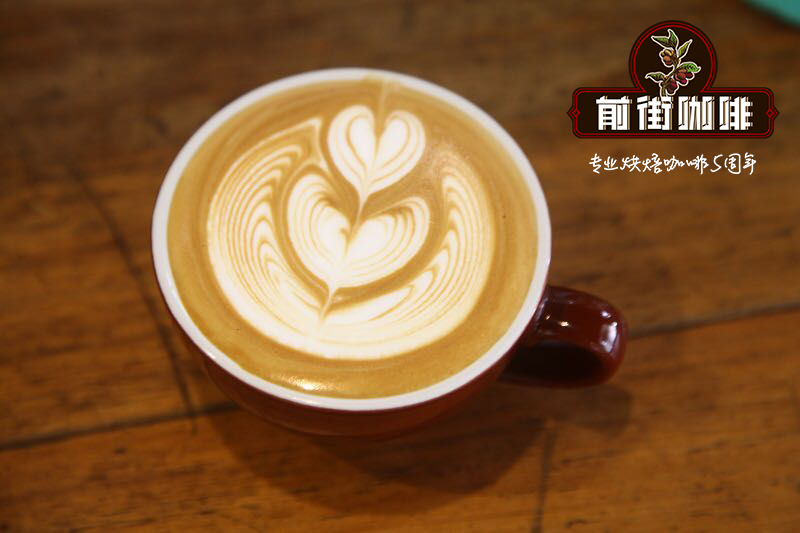How to practice coffee flower embossing? How to pull embossed tulips? Pull pattern embossing course

In the art of lattes, most of the baristas I meet want to run and then walk. They think it can be done by trying to pour something with poor quality milk. But the reality is that your cappuccino coffee must also have an amazing taste. This is a step-by-step guide to ensure that your pure white or cappuccino coffee not only looks exquisite, but also meets the tastes of consumers.
Where do we start?
A good place to start is to start with things you can control:
Always make sure you have a clean, cool milk can.
-always use fresh cold milk (4-7 °C), the lower the temperature, the better, but do not freeze.
Invest in a milk thermometer, which will help you control the temperature. The milk should be stretched / inflated to about 35-40 °C and steamed no more than 65-70 °C. You only need to use a thermometer until you can control the temperature by touch.
-after adding texture to the milk in a kettle, be sure to wash it, rinse it and cool it again.
-be sure to clean the steam stick before use to prevent the milk from being mixed with water.
-make sure that the pressure of the steam rod is consistent and that there is little moisture (too much moisture will affect the quality of milk).

Environment
Make sure you are using a premium machine brand and feel comfortable. At ease? This may sound strange, but you need to find your own rhythm and style and let nature take its course. The key to quality coffee is to be consistent in everything you do.
Technology of making cashmere with milk
For the past seven years, I have been training baristas and trying to develop a technology that can achieve the most effective and consistent results. As I said before, whether you are an amateur, novice, latte artist or coffee professional, consistency is the key. See the next few pictures that demonstrate this technique.
Pouring technology
Before you try the latte art for the first time, please improve the texture of the milk. To ensure a smooth, silky foam, do not rush to pour, give the milk enough time and make sure the milk surface is polished. When pouring in, pay attention to the inclination of the cup and pitcher to make sure that both are straight and have a steady flow of milk. The speed of pouring and the angle of holding the cup can determine whether the pour is good or bad. Start at a height of about 5 centimeters, all the way up to or directly above the cup. Pour water slowly at first, then speed up the bucket according to the way it is poured and drop it on the way.
When learning to dump, remember not to wobble completely, just focus on controlling the speed, angle and height of the dumping.
Remember, when pouring the first part of the water, start at a height of 5 centimeters.
Slow down and increase speed-keep it simple and observe the shape on the surface.
All baristas have the potential to create the most delicious tasting and creative lattes, but it takes a lot of energy and skill, time, patience and experience. Remember, in the beginning, less is more, and stick to basic principles. As baristas, we have the opportunity to pour some personality on the surface of each cup of coffee we make. But keep in mind that everyone has slightly different expectations for making quality coffee.
Important Notice :
前街咖啡 FrontStreet Coffee has moved to new addredd:
FrontStreet Coffee Address: 315,Donghua East Road,GuangZhou
Tel:020 38364473
- Prev

What is espresso? What is the difference between Italian concentration and extra concentration? Does Ristretto taste good?
Espresso, latte, plain white coffee, American coffee, long black coffee just when you think you know and understand the difference between all these drinks, you will hear someone ordering ristretto in front of the coffee shop. Wait, what do we do now? What is RISTRETTO? Before we study ristretto, we need to study espresso. Espresso is a small cup of 30 milliliters
- Next

The Story of Sumatra Mantenin Coffee beans Lin Dong Manning Huang Jin Manning Coffee brewing Flavor
When it comes to Sumatran manning coffee, it has low acidity and high concentration, grassy aroma, and has a rich and impressive taste. Friends who don't like sour taste are recommended to try. Qianjie has been a loyal fan of Manning coffee since it opened its shop in Qianjie. At present, among the Manning beans on the shelves are Lin Dong Manning, Golden Manning and Tiger Man.
Related
- Beginners will see the "Coffee pull flower" guide!
- What is the difference between ice blog purified milk and ordinary milk coffee?
- Why is the Philippines the largest producer of crops in Liberia?
- For coffee extraction, should the fine powder be retained?
- How does extracted espresso fill pressed powder? How much strength does it take to press the powder?
- How to make jasmine cold extract coffee? Is the jasmine + latte good?
- Will this little toy really make the coffee taste better? How does Lily Drip affect coffee extraction?
- Will the action of slapping the filter cup also affect coffee extraction?
- What's the difference between powder-to-water ratio and powder-to-liquid ratio?
- What is the Ethiopian local species? What does it have to do with Heirloom native species?

